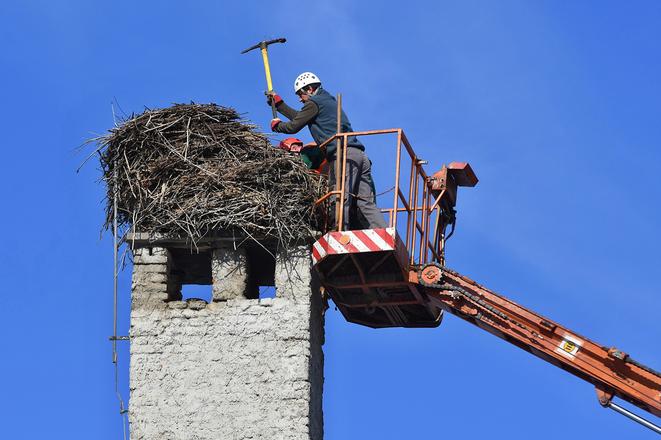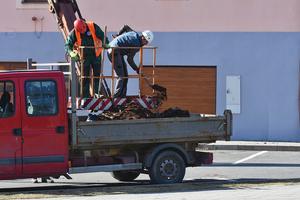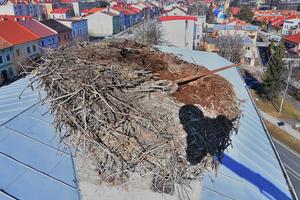A nest that storks have been building for many years on a chimney of the local municipal office building in Spišská Belá has had to be modified.
This exercise required a hoisting platform as the nest is located at such a height and is the biggest one in the region.
Disrupting statics
The Head of Administration of Pieniny National Park (PIENAP) Vladimír Kĺč, noted that records say that storks started to build the nest in 1950 and since then the birds have collected 1,120 kilograms of material.
“Nobody moved it in the beginning and the material was building up,” he said, as quoted by the TASR newswire.
The nest measured 120 centimetres in height, 220 centimetres in length and was 160 centimetres wide. It was a great burden to the chimney and there was a possibility that it would start to disrupt the statics so the nest needed some modifications.
In the past, a pad was built under the nest to make nesting for the storks easier. Workers cleaned this, removed the old material and added new grass reed and weaving so the storks could comfortably nest.
46 baby storks
It was necessary to use a pick axe to dismantle the pad as the inside was still frozen. Besides soil, branches and other natural materials, there were also many cables, a fan belt, string, non-woven fabric and plastic film.
“We are preventing the storks from entangling themselves in the string and being harmed,” explained Kĺč, as quoted by TASR. The micro-climate in the nest has also been improved.
The first data available about the nesting of storks in Spišská Belá is from 1883 when several nests were built in the town. Environmentalists observed the coupling of the storks in the nest on the municipal building last year. The interesting thing is that the marked female stork was coupling in this nest but laid eggs and raised her young in nearby Bušovce.
“Thanks to the markings of the storks, we can disprove the belief that storks are faithful and have only one life-time partner,” said Kĺč, as quoted by TASR. Since 2000, 46 baby storks have been born in the nest.



 (source: Oliver Ondráš, TASR)
(source: Oliver Ondráš, TASR)


